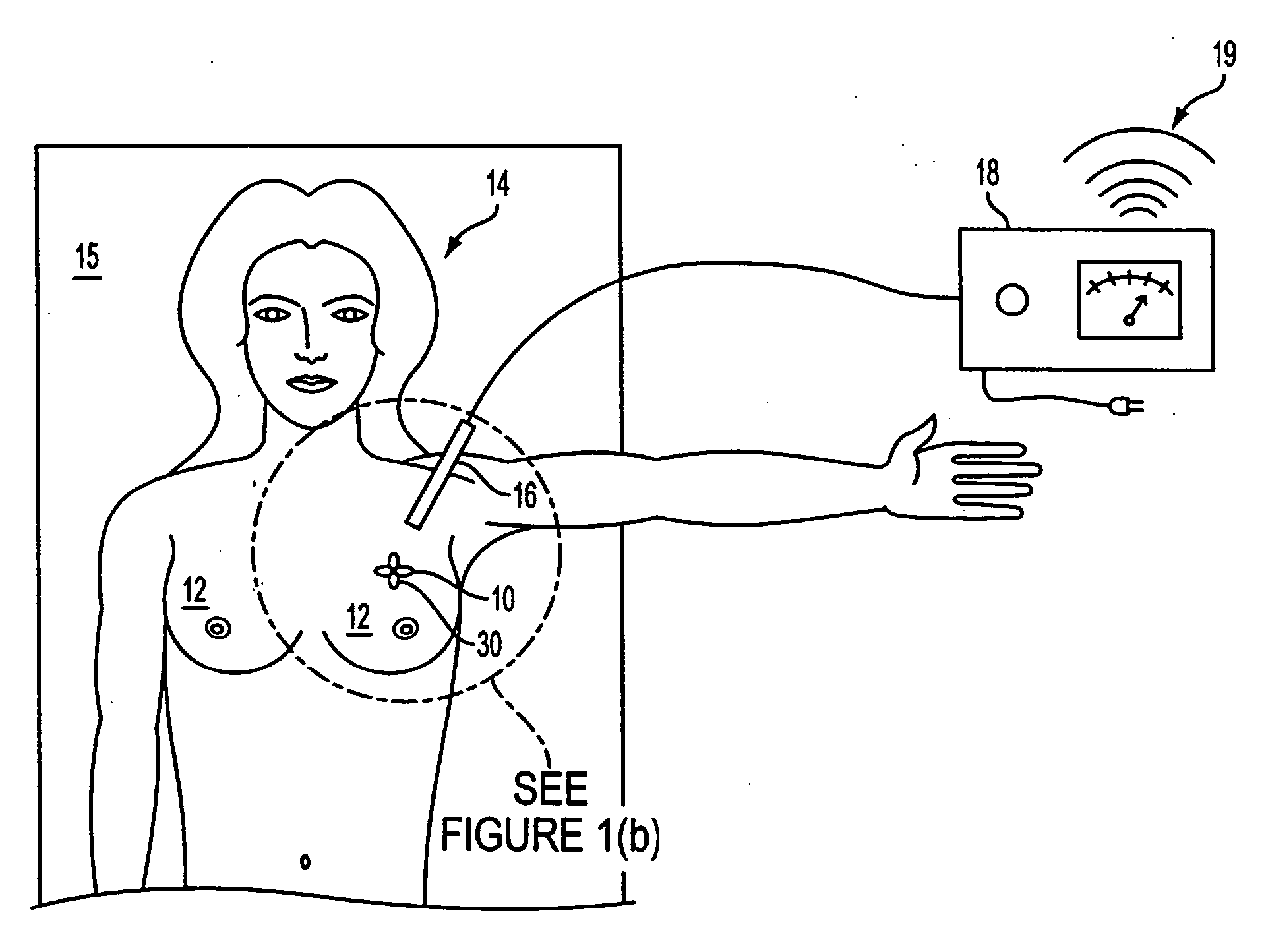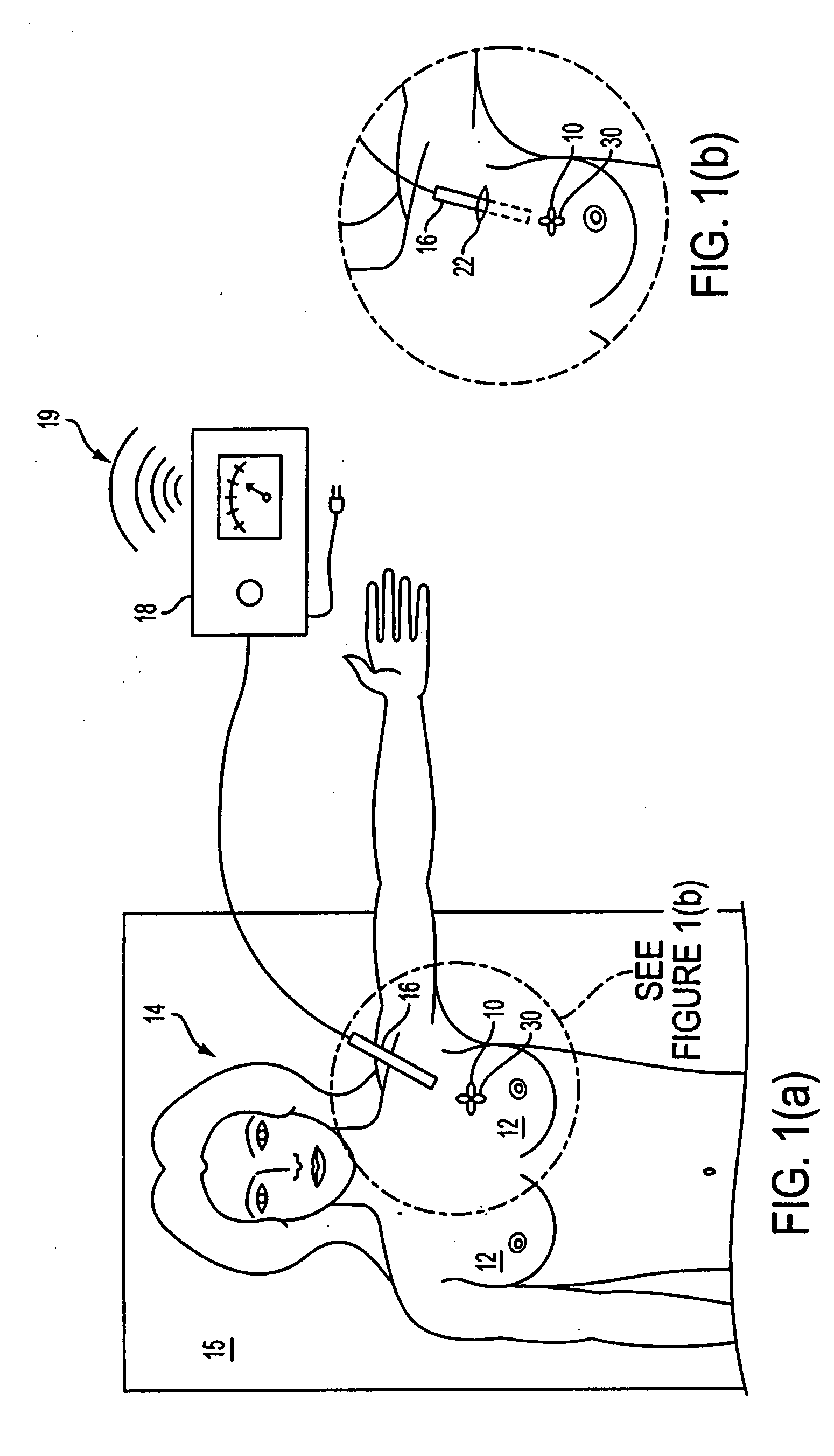Tissue Marking Devices and Systems
a technology of tissue marking and marking devices, which is applied in the field of implantable and readily detectable medical devices and systems, can solve the problems of compromising future successful localization, requiring image guided localization procedures, and diagnostic imaging has increased the frequency of small lesions throughout the body detection frequency, etc., to achieve the effect of maximizing detectability
- Summary
- Abstract
- Description
- Claims
- Application Information
AI Technical Summary
Benefits of technology
Problems solved by technology
Method used
Image
Examples
Embodiment Construction
[0040] The subject invention is comprised of a series of implantable sterile and biologically inert metal devices designed to mark the location of the site of a lesion in tissue. These markers are designed to optimize their properties for subsequent metal detection. Such optimization of detection characteristics will be accomplished by creating a device, which, unlike all other existing localization devices, has been specifically designed to provide the maximum metal detection signal and the clearest directional information possible, given the necessities of small size, tissue stability, patient comfort and biocompatibility.
[0041] Turning now to the drawings, FIG. 1(a) shows a marker 10 according to the present invention implanted in a patient's breast 12 with the patient 14 positioned for surgery on a table 15. A metal detection probe 16 is illustrated in communication with a metal detector display 18 with audible output 19. A suitable metal detector and probe is illustrated in Tr...
PUM
 Login to View More
Login to View More Abstract
Description
Claims
Application Information
 Login to View More
Login to View More - R&D
- Intellectual Property
- Life Sciences
- Materials
- Tech Scout
- Unparalleled Data Quality
- Higher Quality Content
- 60% Fewer Hallucinations
Browse by: Latest US Patents, China's latest patents, Technical Efficacy Thesaurus, Application Domain, Technology Topic, Popular Technical Reports.
© 2025 PatSnap. All rights reserved.Legal|Privacy policy|Modern Slavery Act Transparency Statement|Sitemap|About US| Contact US: help@patsnap.com



